Finally harvested and rippled the flax. Not the best year (too dry early on and not enough weeding!) but but the best group of harvesters!
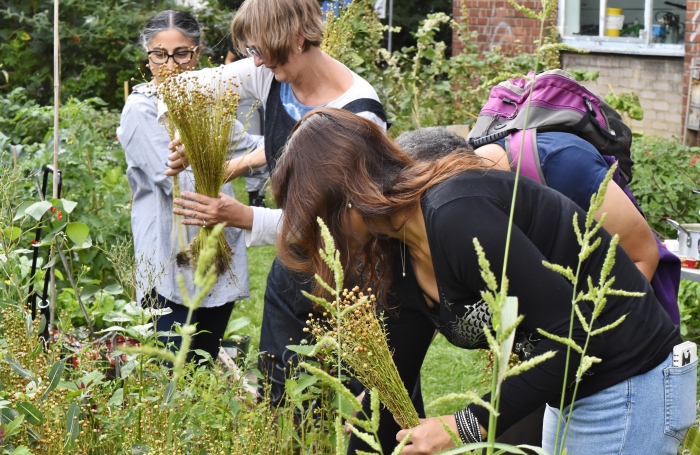

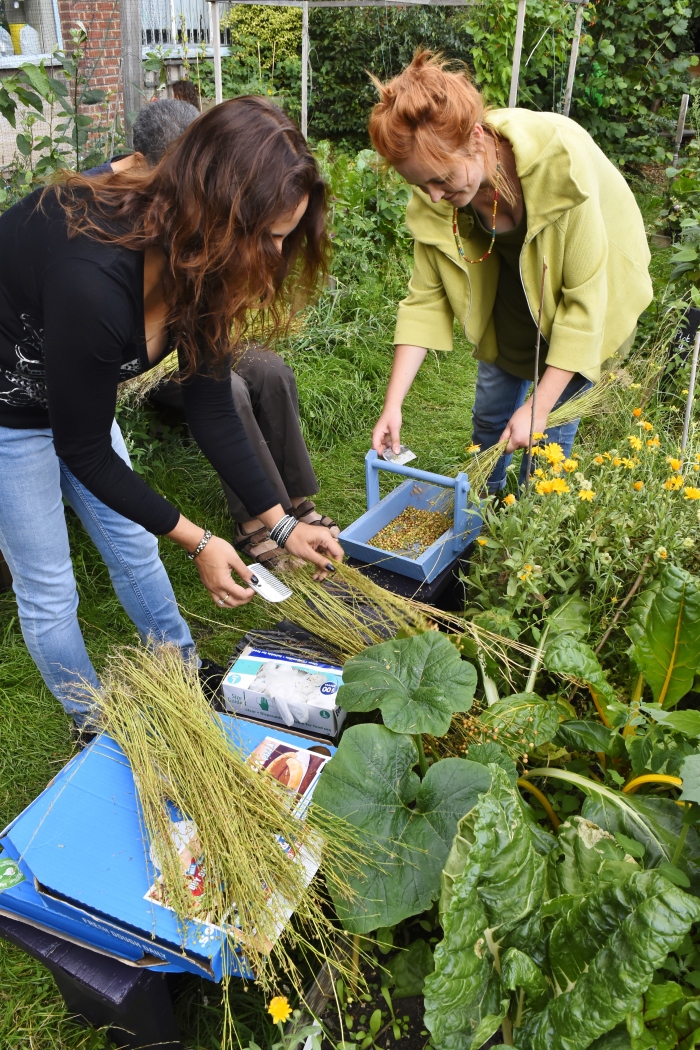


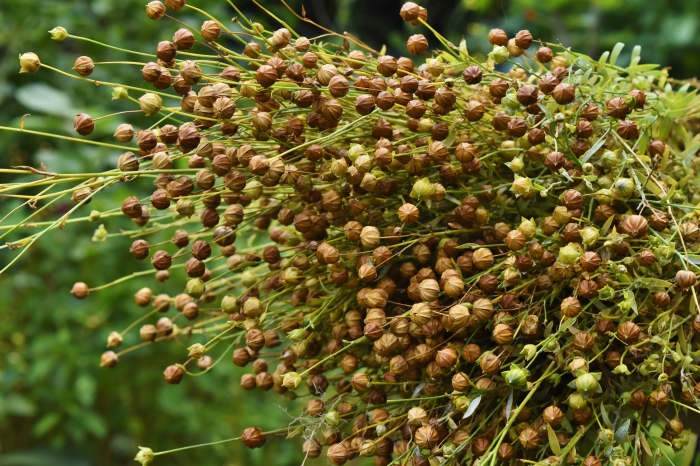



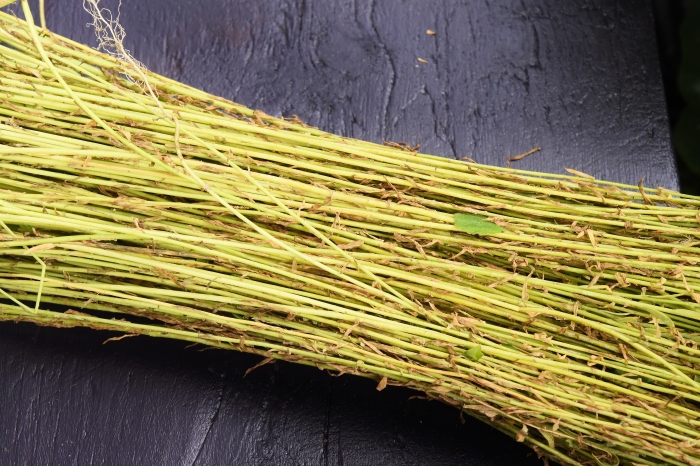
Finally harvested and rippled the flax. Not the best year (too dry early on and not enough weeding!) but but the best group of harvesters!










Our annual woad and indigo harvest and dye workshop was an evening of gentle delight. It involved curiosity, experiment and awe at that magical transformation of plant into colour. We also harvested our flax and ate amazing scones with home-made jams. Sometimes you can imagine that all is right with the world.
We did two pots – one of woad and one of Japanese indigo, which usually gives a stronger colour but we found the woad was just as potent this year. Thanks to Steve for taking the photos.


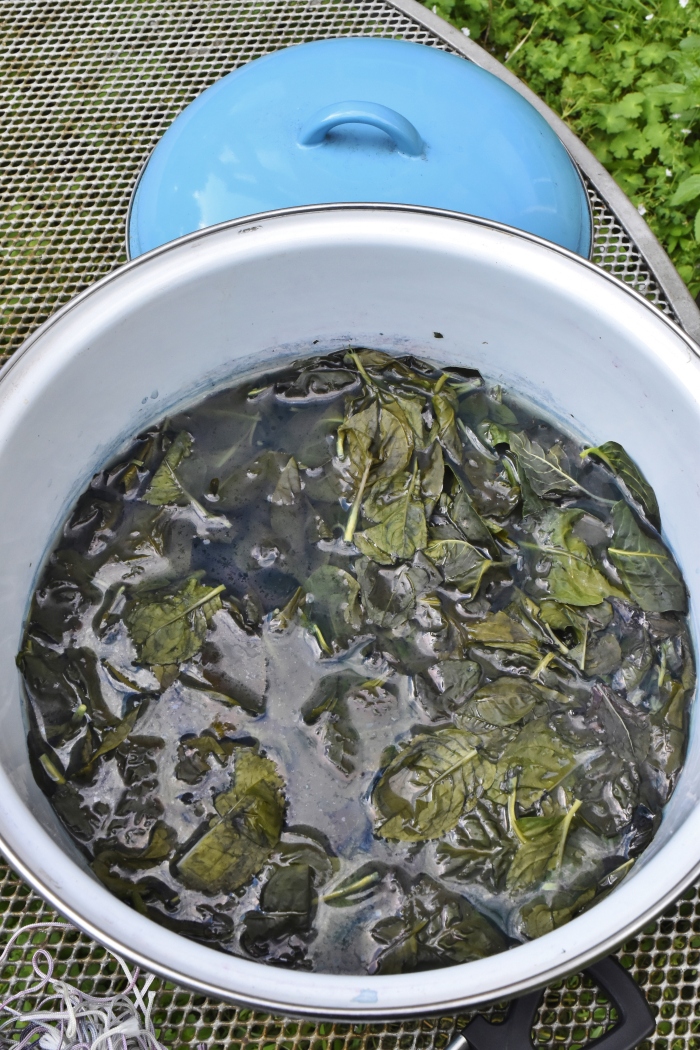














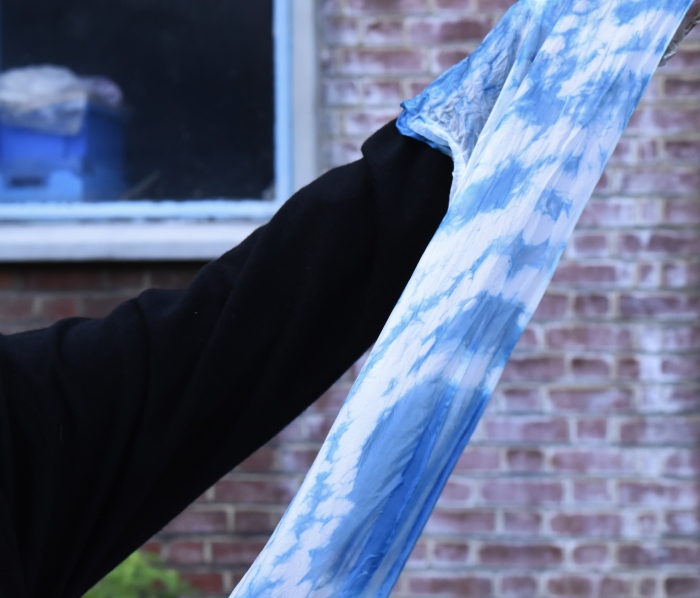

Sometimes, when we’re setting up a stall for a community event my heart sinks a little. The sky is grey and the wind is whipping round the marquee. We have a long day ahead of us and we must be friendly and active and sometimes that seems too much. But these are the times when you really need that human activity. These are the times that will really lift you.
Some local organisations got together on Saturday at Mabley Green to coincide with a football competition at Hackney Wick FC. Our stall neighbours included Children With Voices, Hackney Quest , Hackney Pirates and ecoACTIVE– all creative and inspiring outfits which encourage children to be active, curious and inventive – to give them alternatives to the other stuff out there like gangs and slumping on the sofa.
As our contribution we set up to make willow crowns with plants picked from the garden – including ceanothus, ivy, broccoli flowers, dandelions, shepherd’s purse, geraniums, yarrow and red valerian – and seeing the wonderful variety in both the people and their creations lifted our spirits.
And if this video of Michelle talking about the event doesn’t lift your heart, you may need to seek a doctor: Jumping Beans
We like to try things out in the garden. We’ve had a go at crops for fibre and grain: flax and wheat grew well and an ancient type of barley, bere, was successful – though was then eaten by mice. We’ve also sown nuts and legumes from the grocer; the walnut and pistachio trees are doing well and we got a tiny handful of chick peas this year originally from a pack of dried ones. They shrink to nothing – and are too precious to eat anyway. We grow Asian herbs and leaves such as shiso, pineapple sage and tree spinach – and coriander, of course. We’ve also had some success with sweet potato.
We’ve had failures. I’ve never managed to get saffron crocuses going and the ginger I tried rotted, the tea seed never germinated and every year I failed to grow melons. I’d sow them in the richest soil in the most sheltered spot and they always defy me.
This spring I found an old packet of water melon seeds from Lidl. There were 2 left in the packet so like Jack (of the beanstalk)’s mother, I just chucked them onto some soil without much hope of riches. This is how it went. 




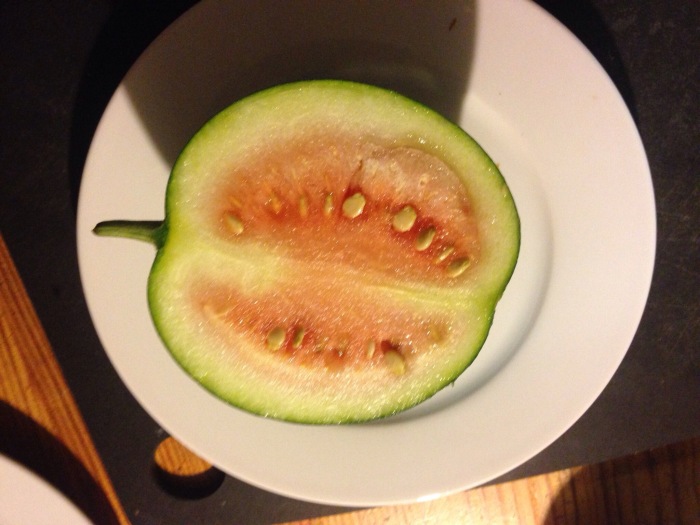
This is the key to a technique for flax spinning we learnt last night: dampen your knee. What’s great about our flax to thread sessions is that the people who come are so skilled and cover such a wide range of interests from sowing to… er… sewing. Last Thursday at the London College of Fashion we had growers from community gardens and allotments, spinners and knitters, technical innovators and fashion designers. We honed two methods of spinning; one using the drill method. I now know you must wet the fibre to help it bond to itself and that you must turn the drill anti-clockwise to make the magic really work. The other technique, which gardener, designer and teacher Dina demonstrated, used no equipment apart from the above-mentioned damp knee, and involved rolling the heckled fibre on a leg see our Knee-Spinning video. We also got an excellent new model for our garment – Benjamin. He wears it very well. Kellie also models the string she made – as a stylish belt.
I met Aaron through Twitter. Last year in the midst of the flax project, I scoured the electronic world for spinners and we found each other. He was willing to spin the flax and, not only that, spin in primary schools with scores of excited children buzzing round him. And then repeat.
He came to the little exhibition Zoe Burt put on at Brockwell Park House – featuring the garment. It was such a joy to see him again and relive those rather fraught sessions at the schools and to remind ourselves what we’d achieved. We also marvelled at the work of spinners. Without them, no fabric. It doesn’t matter how much processing you do to fibre, without someone to twist it, there is no thread, no strength. That makes spinners powerful and reinforces the fact that a spinster was, because of her skill, able to make a living. She didn’t need to get married. She was independent. We should reclaim the word from its negative associations – but that is another matter.
Back to Aaron. He’d brought his spinning wheel to the exhibition and spun away – showing some visitors how to do it, too. He works for TfL to make a living but his love is spinning and knitting and that makes him happy. I said he was the Philip Larkin of the knitting world – supporting his art with a mundane job. Making beautiful things, working hard and being quite content with that.
Thanks, Aaron. It was a great collaboration.
He seems to be willing to do it again so hopefully we can continue our partnership and throw ourselves back into those classrooms and break, scutch, heckle and spin with those buzzing children. Hurrah!
On Sunday, 1st of March The Lindley Hall at the Royal Horticultural Society was buzzing with creativity. Cordwainers Grow was one of the busiest stalls of the day as numerous adults and children came by to dye a silk pocket square using dried flowers and onion skins! Each flower created a different colour, which led to a lot of experimentation around the table. Hollyhock tinted a purplish blue, coreopsis tinted an orange, madder created red while onion skins created a yellow. Whilst people would wait for the dye to submerge in the cloth, they had the chance to see the impressive garment created by the technicians at London College of Fashion using linen grown from the flax plant. The garment was a part of Cordwainers Grow’s growing project last year where flax was grown in plots around the city of London. This year the project is to produce flax string. Thus a pack of seeds for a metre square plot was available to buy for £5 as well. The anticipation while waiting for the dyed silk pocket square was well worth it as everyone was continually delighted by the results. Everyone’s silk pocket square was incredibly unique. It was definitely a merry day at the RHS for everyone!
To mark London Fashion Week, we present the story of a slow, unfashionable piece of clothing. Grow a Garment Press Release1